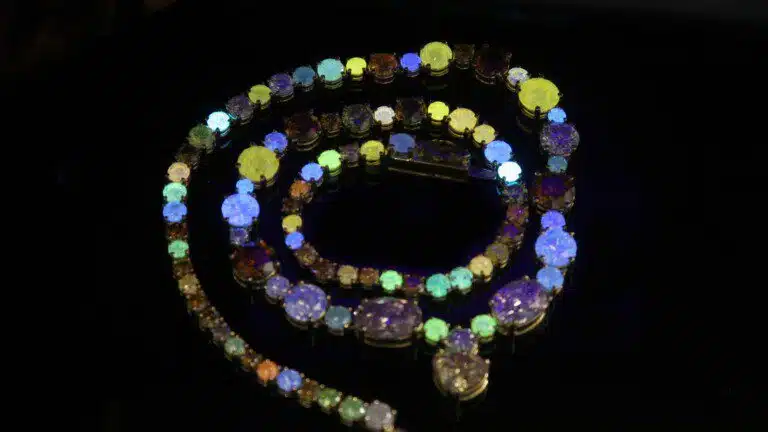MMtwo
Ideal_Rock
- Joined
- Sep 20, 2009
- Messages
- 5,063
I happened to be drawn into a discussion and another spot in the Internet. There seems to be consensus there that fluorescence is common in lab diamonds. How I understand it is that a blue fluorescence in a diamond is usually a hallmark of natural. Have I lost my mind?
According to Steven Rees, Executive Director, IGI North America Grading Laboratory:
We see fluorescence in about 10 percent or less of lab grown stones. The majority of those that have any are CVD (Carbon Vapor Deposition) grown, and tend to emit very slight yellow fluorescence. Only about one percent or less of HPHT (High Pressure High Temperature) produced stones emit fluorescence. When present it tends to be slightly orange.

those folks are definitely wrong. Fluor is super rare in lab diamonds. I wonder why they thought that???Thank you, Gentlemen. How puzzling that such a large group of folks argued that the fluorescence was common in lab diamonds. On clear diamonds, I had always believed a UV light was a rather reliable way to screen for natural diamonds, especially with a group of melee shining different levels of blue. The colored diamonds may fluoresce, but not the clear non-colored labs. Given the amount of diamonds you touch, your input is very appreciated.
Interesting…..
Has anyone seen an IGI report on a colorless lab diamond indicating fl??
10% sounds generous. If it is the case we’d see reports
Awesome work guys!
@freddyboston
I should have realized I can check this myself.
I did a search for Lab D-Z stones- with no other parameters and got 1,210,838 results.
Add in all levels of fluorescence?
546 results.
Then, looking over the results, about half were actually pinks which were miscatagorized as D-Z
The 10% figure is a bit optimistic, to say the least......
In patent applications for automated Fluorescence grading the GIA mention both 365 and 385nm, both invisible. I believe the GIA may well be using 385nm (which generates a stronger N3 blue fluoro than 365nm).The reporting of fluorescence truly should be connected to the wavelength of UV light being used. The Lab Reports all are using 365nm as the standard. You get more fluorescence from light closer to 400-430nm, but labs don't use that wavelength. The 365nm choice keeps reporting fluorescence less prevalent.
When testing for Lab Created diamonds I use 405, 365 and also 240nm wavelengths. The 240nm makes almost all Lab stones fluoresce and some to phosphoresce, but none of the formal reports we rely on tell any clients or users of these results even though they commonly use both 365 and a shorter wavelength such as 240nm. The results of using short wave UV are an excellent screening tool, but fluorescence to short wave UV has no effect on visual color grading because shortwave UV is thankfully not a component of our environment
The GIA choosing to change to 385nm would go against their obvious previous bias to minimize UV fluorescence when it was considered negative by the trade. Now that blue UV fluorescence has taken on a niche following and acceptance, chasing that trend is more in line with consumer and trade demand for some way to know their diamond is Mined, differentiating Mined from most of the colorless Lab material which is not generally reactive to LWUV or 400nm+ blue light.
Does anyone have the historical reason 365nm has been the standard LWUV lighting for diamond fluorescence grading since the 1950's? Was this the only commercially available wavelength tube or bulb available at the time? Is this change because of the LED and laser revolutions resulting in large selections of wavelengths?
Yes, the available at reasonable cost bulb was advertised as 365nm.Does anyone have the historical reason 365nm has been the standard LWUV lighting for diamond fluorescence grading since the 1950's? Was this the only commercially available wavelength tube or bulb available at the time? Is this change because of the LED and laser revolutions resulting in large selections of wavelengths?
Karl is correct, the mercury tube.It was a mercury based UV light tube which has a native emission peak at around 365nm.
It was adopted for a lot of things as a result.
LEDs are available binned in a lot of different UV wavelengths.
At the consumer level there is a lot of fraud selling ~400nm LEDs as more expensive wavelengths.
However on the commercial side you can get properly binned LEDs.